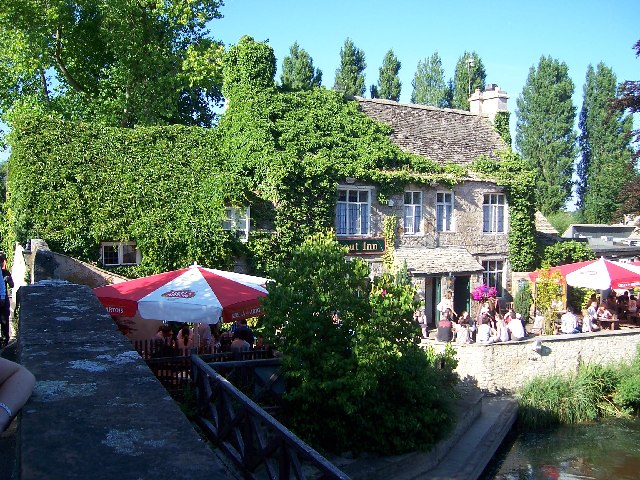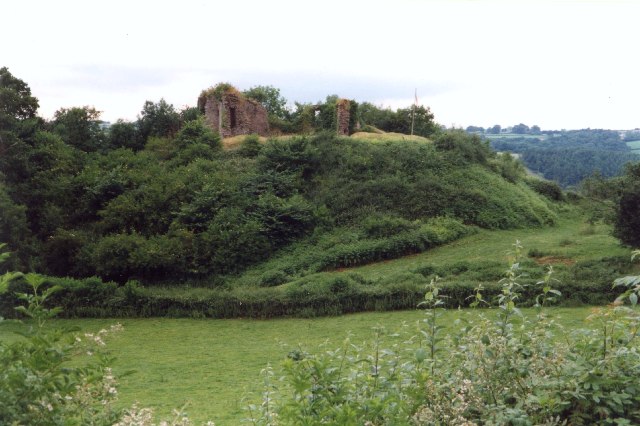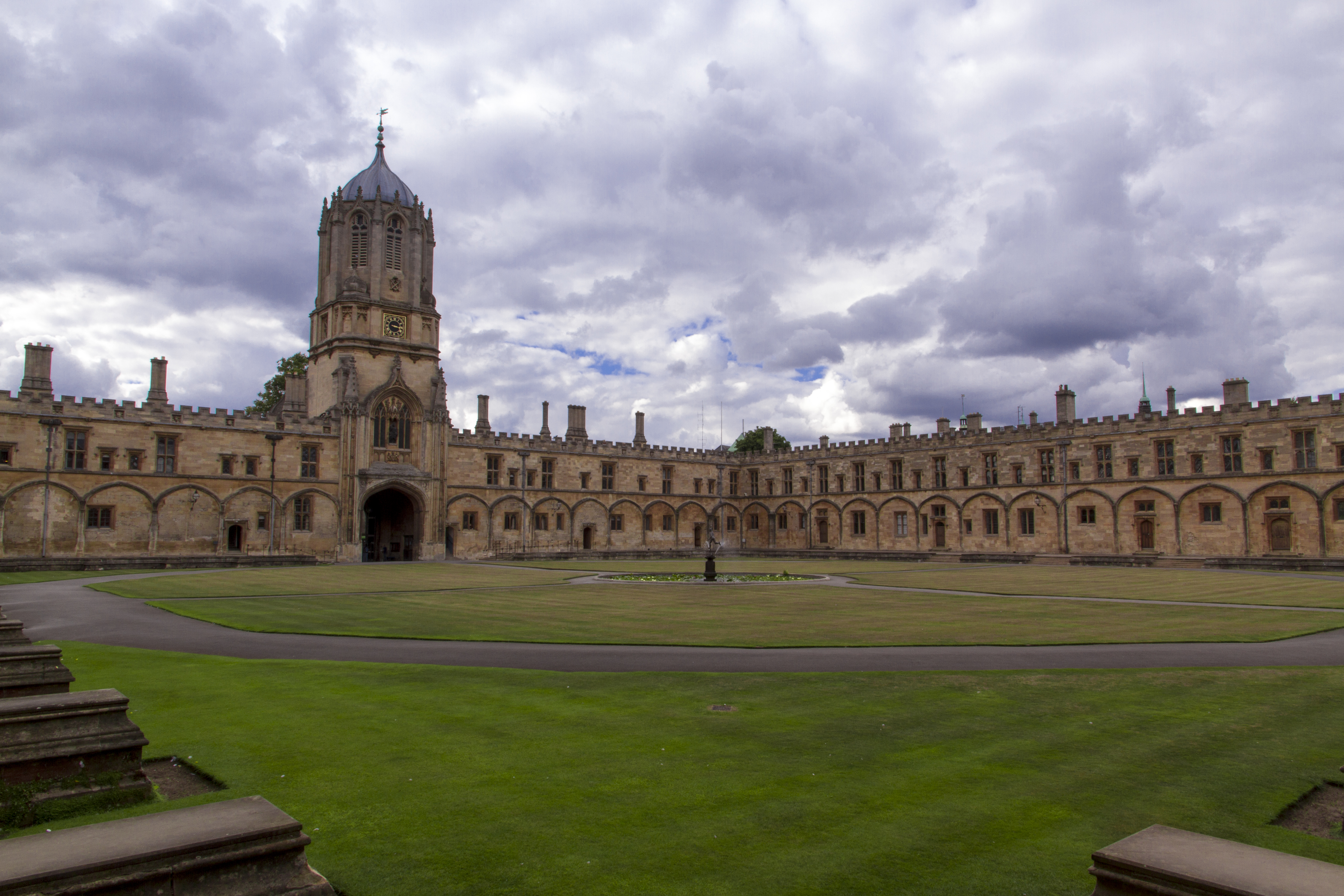|
Godstow
Godstow is about northwest of the centre of Oxford. It lies on the banks of the River Thames between the villages of Wolvercote to the east and Wytham to the west. The ruins of Godstow Abbey, also known as Godstow Nunnery, are here. A bridge spans the Thames and the Trout Inn is at the foot of the bridge across the river from the abbey ruins. There is also a weir and Godstow lock. History Godstow Abbey (see detailed history below) was built here, starting in 1133. It housed an order of Benedictine nuns. Rosamund Clifford, the mistress of King Henry II, retired here and died at 30 in about 1177. Her grave is somewhere in the grounds but now lost. The abbey was suppressed in 1539 under the Second Act of Dissolution. The abbey was then converted into Godstow House by George Owen. It was occupied by his family until 1645, when the building was badly damaged in the English Civil War. After this damage, the building fell into disrepair and was used by the locals as a source of ston ... [...More Info...] [...Related Items...] OR: [Wikipedia] [Google] [Baidu] |
Alice Henley (abbess)
Godstow is about northwest of the centre of Oxford Oxford () is a city in England. It is the county town and only city of Oxfordshire. In 2020, its population was estimated at 151,584. It is north-west of London, south-east of Birmingham and north-east of Bristol. The city is home to the .... It lies on the banks of the River Thames between the villages of Wolvercote to the east and Wytham to the west. The ruins of Godstow Abbey, also known as Godstow Nunnery, are here. A Godstow Bridge, bridge spans the Thames and the Trout Inn is at the foot of the bridge across the river from the abbey ruins. There is also a weir and Godstow Lock, Godstow lock. History Godstow Abbey (see detailed history below) was built here, starting in 1133. It housed an order of Benedictine nuns. Rosamund Clifford, the mistress of King Henry II of England, Henry II, retired here and died at 30 in about 1177. Her grave is somewhere in the grounds but now lost. The abbey was suppressed in 1539 ... [...More Info...] [...Related Items...] OR: [Wikipedia] [Google] [Baidu] |
Godstow Lock
Godstow Lock is a lock on the River Thames in Oxfordshire, England. It is between the villages of Wolvercote and Wytham on the outskirts of Oxford. The first lock was built of stone by Daniel Harris for the Thames Navigation Commission in 1790. It is the lock furthest upstream on the river which has mechanical (electro-hydraulic) operation - every lock upstream of Godstow utilises manual beam operation instead. The main weir is a short way upstream but there is another weir at Godstow Bridge just above the Trout Inn. These feed into a backwater (Wolvercote Mill Stream) which has come from above King's Lock by Wolvercote. History Prior to the construction of the lock, Godstow Bridge served as a form of lock, which remained in service for some time after the construction of Godstow Lock in 1790. After the lock was constructed there were complaints about the raising of the water levels and the effect this had on the meadows upstream at Pixey Mead. After some years of dilapidatio ... [...More Info...] [...Related Items...] OR: [Wikipedia] [Google] [Baidu] |
Rosamund Clifford
Rosamund Clifford (before 1150 – ), often called "The Fair Rosamund" or "Rose of the World" (Latin: ''rosa mundi''), was a medieval English noblewoman and mistress of Henry II, King of England, who became famous in English folklore. Life Early life Rosamund Clifford, born before 1150, is usually assumed to have been the daughter of Walter de Clifford (born Walter FitzRichard; 1113–1190), a Marcher Lord, and his wife Margaret. He gained his surname from his major holding, Clifford Castle in Herefordshire, where he was first steward then lord. She had three brothers, Walter (circa 1160–1221), Richard and Gilbert, and two sisters: Amice, who married Osbern FitzHugh of Richard's Castle, Herefordshire and Lucy, wife of Hugh de Say of Stokesay, Shropshire. Her name likely came from the Latin phrase ''rosa mundi'', meaning "rose of the world." Clifford was first raised at her father's Clifford Castle, then sent to a convent of Benedictine nuns in Godstow Abbey for educ ... [...More Info...] [...Related Items...] OR: [Wikipedia] [Google] [Baidu] |
Elizabeth Felmersham
Elizabeth Felmersham (? – 1446) became the English abbess of the Benedictine Godstow Abbey at a time when the abbey was not well regulated. Life The details of Felmersham's early life are unclear but her family is presumed to have come from Felmersham in Bedfordshire and at some time her family moved to Oxfordshire. Records show that a William Felmersham owned property in Oxfordshire in the 1420s. Elizabeth Pytte had been the abbess of the Benedictine , image = Medalla San Benito.PNG , caption = Design on the obverse side of the Saint Benedict Medal , abbreviation = OSB , formation = , motto = (English: 'Pray and Work') , foun ... Godstow Abbey when Felmersham was elected to be the abbess. The nuns were not well disciplined and she had the task of managing the abbey and in bringing the nuns into good order. The abbey had been built on an island in the River Thames just outside the university town of Oxford. Th ... [...More Info...] [...Related Items...] OR: [Wikipedia] [Google] [Baidu] |
Wolvercote
Wolvercote is a village that is part of the City of Oxford, England. It is about northwest of the city centre, on the northern edge of Wolvercote Common, which is itself north of Port Meadow and adjoins the River Thames. History The Domesday Book of 1086 lists the village as ''Ulfgarcote'' (cottage of Woolgar; or Woolgar's place). The toponym had become "Wolvercote" by 1185. Wolvercote housing faced onto its extensive commons, which provided much of the community's livelihood. Some residents still have ancient rights on the commons. Geese rearing was once an important local activity, and a goose is still one of the village symbols. Horses and cattle are still grazed on Wolvercote Common and Port Meadow. In 1789 the Oxford Canal divided the village into two parts, and in 1846 the Oxford and Rugby Railway was built beside the canal through the village. In 1850 the Buckinghamshire Railway was completed through a tunnel and cutting along the eastern edge of Upper Wolvercote. The we ... [...More Info...] [...Related Items...] OR: [Wikipedia] [Google] [Baidu] |
Godstow Bridge
Godstow Bridge is a road bridge across the River Thames in England at Godstow near Oxford. The bridge is just upstream of Godstow Lock on the reach to King's Lock and carries a minor road between Wolvercote and Wytham. The bridge is in two parts. The older part crosses the original course of the river and weir stream near The Trout Inn, a well-known public house. This stone bridge was in existence in 1692 and was probably the one held by the Royalists against Parliamentarians in 1645, during the English Civil War. It has two arches, one being pointed and the other rounded. The newer part was built across the new lock cut in 1792. This has two round arches of brick and was rebuilt in 1892. The North arch dates from medieval times. The Bridge is a Grade II Listed Building. The importance of the bridge was reduced by the construction of the Oxford By-pass and the A34 Bridge a short distance upstream. See also *Crossings of the River Thames The River Thames is the second-longes ... [...More Info...] [...Related Items...] OR: [Wikipedia] [Google] [Baidu] |
The Trout Inn
The Trout Inn (often simply referred to as The Trout) is a historic pub in Lower Wolvercote north of Oxford, close to Godstow Bridge, directly by the River Thames. Media and celebrities The pub features in Evelyn Waugh's novel ''Brideshead Revisited'' and in Colin Dexter's ''Inspector Morse'' series, which was written and filmed in and around Oxford. For example, it appears in the TV episode "The Wolvercote Tongue". An alternative reality version also appears in Philip Pullman's ''La Belle Sauvage''. It also appears in the 1997 film version of ''The Saint (1997 film), The Saint''. In 2001 the Trout Inn was visited by US President Bill Clinton and his daughter Chelsea Clinton, Chelsea, who was then a graduate student at University College, Oxford. Architecture The Trout Inn is a Grade II listed building built principally in the 17th century, with some 18th-century alterations and additions. Godstow Bridge, to the south of the inn, consists of two stone arches across the Thames ... [...More Info...] [...Related Items...] OR: [Wikipedia] [Google] [Baidu] |
The Trout Inn
The Trout Inn (often simply referred to as The Trout) is a historic pub in Lower Wolvercote north of Oxford, close to Godstow Bridge, directly by the River Thames. Media and celebrities The pub features in Evelyn Waugh's novel ''Brideshead Revisited'' and in Colin Dexter's ''Inspector Morse'' series, which was written and filmed in and around Oxford. For example, it appears in the TV episode "The Wolvercote Tongue". An alternative reality version also appears in Philip Pullman's ''La Belle Sauvage''. It also appears in the 1997 film version of ''The Saint (1997 film), The Saint''. In 2001 the Trout Inn was visited by US President Bill Clinton and his daughter Chelsea Clinton, Chelsea, who was then a graduate student at University College, Oxford. Architecture The Trout Inn is a Grade II listed building built principally in the 17th century, with some 18th-century alterations and additions. Godstow Bridge, to the south of the inn, consists of two stone arches across the Thames ... [...More Info...] [...Related Items...] OR: [Wikipedia] [Google] [Baidu] |
Siege Of Oxford
The siege of Oxford comprised the English Civil War military campaigns waged to besiege the Royalist controlled city of Oxford, involving three short engagements over twenty-five months, which ended with a Parliamentarian victory in June 1646. The first engagement was in May 1644, during which King Charles I escaped, thus preventing a formal siege. The second, in May 1645, had barely started when Sir Thomas Fairfax was given orders to stop and pursue the King to Naseby instead. The last siege began in May 1646 and was a formal siege of two months; but the war was obviously over and negotiation, rather than fighting, took precedence. Being careful not to inflict too much damage on the city, Fairfax even sent in food to the King's second son, James, and was happy to conclude the siege with an honourable agreement before any further escalation occurred. Oxford during the civil war The creation of the King's Oxford Parliament in January 1644 placed Oxford at the centre of ... [...More Info...] [...Related Items...] OR: [Wikipedia] [Google] [Baidu] |
Wytham
Wytham ( ) is a village and civil parish on the Seacourt Stream, a branch of the River Thames, about northwest of the centre of Oxford. It is just west of the Western By-Pass Road, part of the Oxford Ring Road ( A34). The nearest village is Godstow. Wytham was the northernmost part of Berkshire until the 1974 boundary changes transferred it to Oxfordshire. The toponym is first recorded as ''Wihtham'' around 957, and comes from the Old English for a homestead or village in a river-bend. History of the manor The manor of Wytham, along with Wytham Abbey (not a religious foundation but the manor house) and much of the village, was formerly owned by the Earls of Abingdon. The Church of England parish church of All Saints was originally a medieval building but it was extensively rebuilt between 1811 and 1812 by Montagu Bertie, 5th Earl of Abingdon. The ruins of the former Godstow Nunnery lie just east of the village. The 20th century In the 1920s, The 9th Earl of Abingdon sold th ... [...More Info...] [...Related Items...] OR: [Wikipedia] [Google] [Baidu] |
Alice Liddell
Alice Pleasance Hargreaves (''née'' Liddell, ; 4 May 1852 – 16 November 1934), was an English woman who, in her childhood, was an acquaintance and photography subject of Lewis Carroll. One of the stories he told her during a boating trip became the children's classic 1865 novel ''Alice's Adventures in Wonderland''. She shared her name with " Alice", the heroine of the story, but scholars disagree about the extent to which the character was based upon her. Early life Alice Liddell was the fourth of the ten children of Henry Liddell, ecclesiastical dean of Christ Church, Oxford, one of the editors of '' A Greek-English Lexicon'', and his wife Lorina Hanna Liddell (''née'' Reeve). She had two older brothers, Harry (born 1847) and Arthur (1850–53), an older sister Lorina (born 1849), and six younger siblings, including her sister Edith (born 1854) to whom she was very close and her brother Frederick (born 1865), who became a lawyer and senior civil servant. At the time of her ... [...More Info...] [...Related Items...] OR: [Wikipedia] [Google] [Baidu] |
Lewis Carroll
Charles Lutwidge Dodgson (; 27 January 1832 – 14 January 1898), better known by his pen name Lewis Carroll, was an English author, poet and mathematician. His most notable works are ''Alice's Adventures in Wonderland'' (1865) and its sequel ''Through the Looking-Glass'' (1871). He was noted for his facility with word play, logic, and fantasy. His poems ''Jabberwocky'' (1871) and ''The Hunting of the Snark'' (1876) are classified in the genre of literary nonsense. Carroll came from a family of high-church Anglicanism, Anglicans, and developed a long relationship with Christ Church, Oxford, where he lived for most of his life as a scholar and teacher. Alice Liddell, the daughter of Christ Church's dean Henry Liddell, is widely identified as the original inspiration for ''Alice in Wonderland'', though Carroll always denied this. An avid puzzler, Carroll created the word ladder puzzle (which he then called "Doublets"), which he published in his weekly column for ''Vanity Fair ( ... [...More Info...] [...Related Items...] OR: [Wikipedia] [Google] [Baidu] |







